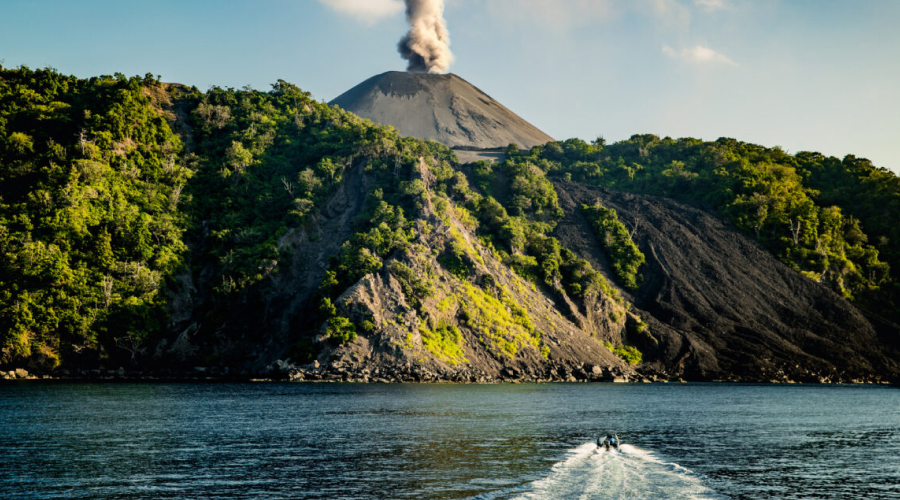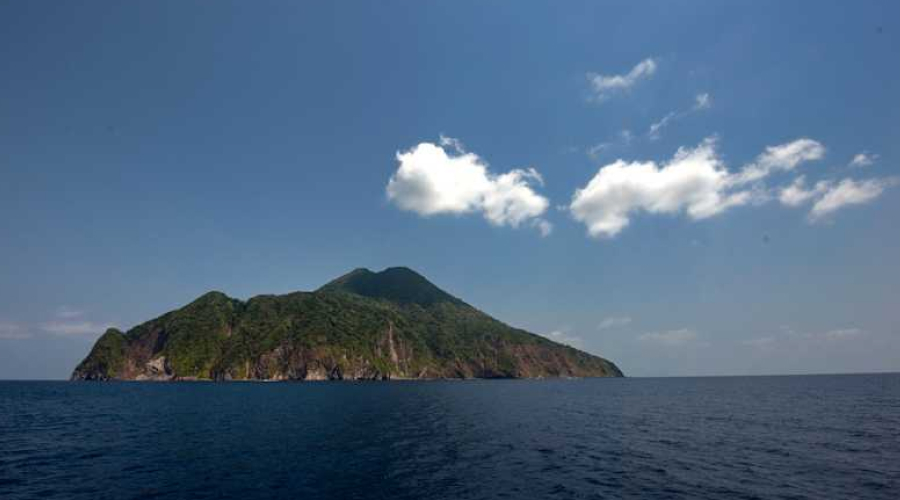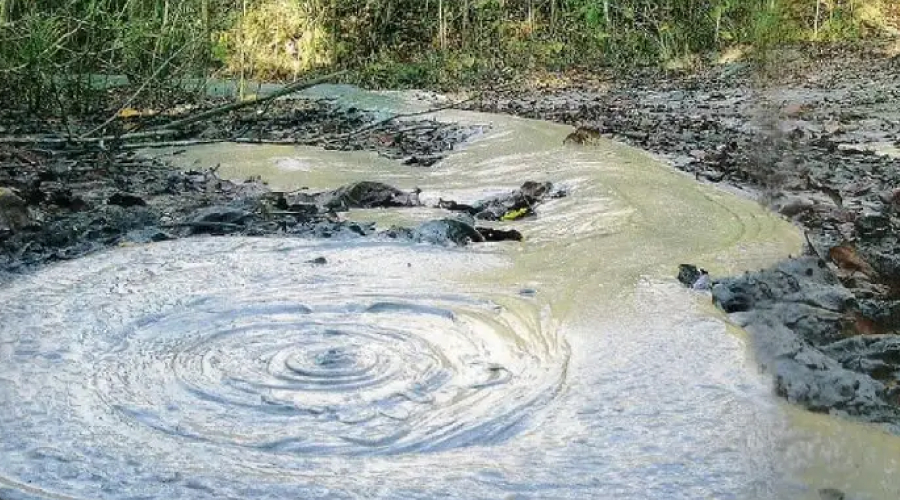The Andaman Islands, with their shimmering white sands, crystal-clear blue waters, and lush tropical beauty, have long enchanted travellers from across the globe. But beneath the palm-fringed coastlines and colourful coral reefs lies an intriguing geological tale that often goes unnoticed. The islands boast the singular distinction of housing the only known volcanoes in all of South Asia. Be it the fiery eruptions of active ones or the silent slumbers of dormant ones, these natural wonders are accompanied by the equally mesmerising mud volcanoes. So, if your wanderlust is tinged with a flair for adventure and curiosity, this guide will explore the volcanic marvels of Andaman just for you.
Suggested Read: Best time to Visit Andaman and Top restaurants in Andaman
The Barren Islands

Journeying about 138 kilometres from the bustling heart of Port Blair, you’ll find yourself in the midst of the expansive waters of the Andaman Sea, arriving at a place that aptly resonates with its name – The Barren Islands. It’s a place where tranquillity meets tempest, remote in location and reachable only by boat or the occasional seaplane.
The Active Volcano of Barren Island
Standing tall and majestic, the only confirmed active volcano of this region is located here. It lies at the convergence of the Indian and Burmese tectonic plates, its history is as tumultuous as the ground beneath. Its fiery eruption first made its mark in 1787, and its subsequent eruptions in 1991 and the most recent one in November 2022, have only accentuated its reputation.
But what ignites this fiery temper? Let’s explore further
Taking a look at the Geology: The Birth of a Volcano
The Andaman Islands, known for their serene beauty, have an interesting geological story beneath. Owing to the subduction zone beneath these islands, they have become sites of significant volcanic activity. Subduction, an intriguing phenomenon, occurs when one tectonic plate yields and slides beneath another. At this juncture, the Eurasian Plate concedes to the mighty Indian Plate, making the region a nexus of geological fervour. As the Indian Plate immerses deeper, being subsumed by the Eurasian counterpart, there’s a build-up of incredible heat and pressure within Earth’s crust. This colossal pressure makes a channel for the scorching molten rock or magma. As this magma makes its path to the surface, the outcome is magnificent yet fierce – the birth of a volcano.
The volcano’s vast crater, measuring an impressive two kilometres in diameter, is surrounded by walls reaching elevations between 250-350 metres. It’s an awe-inspiring sight, a testament to nature’s formidable power.
Life Amidst the Desolation
Beyond the intimidating facade of its volcano, the island’s ecology is stark. The earliest eruption indeed marred its verdant expanse. However, life, in its tenacious spirit, persists. A few resilient species, like the modest-sized goats, fluttering bats, chirpy birds, and industrious rodents, have somehow managed to survive. They’ve braved the odds, thriving in conditions most would deem desolate.
Sightseeing and Water Activities Around Barren Island
Though it’s named ‘Barren’, the island is rich with breathtaking geological formations and vibrant marine life. However, a note to eager travellers: Barren Island isn’t your typical tourist haunt. Located in a restricted area, the island demands due diligence from visitors. You’ll need to procure a special permit from local authorities before setting sail to its shores. And while you can sail around and catch breathtaking views, disembarking on the island itself or night stays are strictly off-limits.
Starting your journey as dawn breaks is advised, considering the 5-hour ferry journey. The reward for your patience? Enthralling basaltic rock formations, the visual narrative of past lava flows, and the mesmerising healthy population of corals beneath the waves.
How to Reach Barren Island?
If you’re willing to witness the wonders of Barren Island up close, there are several ways to reach this volcanic marvel:
By Sea: Both ferries and smaller water boats operate to Barren Island. Upon securing the necessary permits, you can embark on a nautical journey filled with vistas of the deep blue. The island’s rich coral gardens beckon snorkelers, while Havelock-based scuba divers can guide you through deeper explorations.
By Air: For those seeking a bird’s-eye view of the island’s splendour, seaplanes from Port Blair stand ready. Commencing your aerial journey early, preferably between 4:00 to 5:00 am, ensures you maximise your day amidst the volcanic landscapes.
Key Details for Prospective Visitors:
Distance:
- Port Blair to Barren Island: 139 km by sea
Tourist Permit Cost:
- Indian Nationals: 1000 INR per person
- Foreign Tourists: 3500 INR per person
Seaplane Details:
- Cost: Approximately 16000 INR per person
- Booking Conditions: Flights are primarily on-demand, requiring a minimum of around 7 passengers per sortie.
- Ticketing: Commercial queries and ticket bookings for seaplane journeys can be made at the ANIIDCO Ticketing Counter in Port Blair.
Narcondam Island: The Dormant Volcanic Beauty

Nestled close to its more famed counterpart, Barren Island, the tranquil Narcondam Island emerges as the lesser-known gem in the Andaman’s volcanic cluster. Situated in the northern stretches of the Andaman Sea, it stands distinct, with the Geological Survey of India tagging it as a dormant volcano. While its fiery days may be behind it, the volcano’s past ebullience has made a unique habitat, rich in endemic species and wrapped in legends.
The Biodiversity:
The island’s real treasures lie in its rich biodiversity. Its verdant greenery is home to the regal Narcondam Hornbill, a species you won’t find anywhere else. The chirps and rustles might also introduce you to the island’s native mammals – the majestic island flying fox and the elusive Sikkim rat.
Its name, believed to be derived from the Tamil phrase “naraka-kundram” translating to “a pit of Hell“, perhaps mirrors the island’s volcanic roots. However, some argue it’s a mistaken connotation, often confused with its fierier cousin, the Barren Island.
Underwater Activities:
For marine enthusiasts, the waters around Narcondam are nothing short of a dream. These liquid realms are perfect for diving and snorkelling aficionados. Some of the celebrated dive sites, like Chimneys and Lighthouse Reef, exhibit underwater terrains of rocky ridges and steep gradients. Here, divers can marvel at sprawling barrel sponges, gigantic gorgonian fans, and vibrant soft corals.
The marine fauna is no less impressive. From the enigmatic Napoleon wrasse, the stately bumphead parrotfish, and even the majestic mantas, every dive promises a new discovery. The occasional appearance of whitetip and grey reef sharks only adds to the thrill. And for those who wish for a calmer dive, the island’s tranquil bays offer a gentler terrain, replete with hard corals and a plethora of colourful reef fishes.
How to Reach Narcondam Island?
Reaching this secluded paradise requires a bit of planning. Ships from Diglipur remain the primary mode of conveyance. However, for those seeking a faster route, a helicopter service offers an aerial route to the island. Given the limited ferry schedules, operating just once a week, it’s paramount to secure your tickets well in advance. And while you’re on that ferry, leaving Diglipur 140 km behind, the promise of Narcondam’s natural wonders will make every nautical mile worth it.
Narcondam Island is an ode to nature’s ability to reclaim and flourish, turning a dormant volcano into a sanctuary of life both above and below the sea. If you’re seeking an off-the-beaten-track experience, Narcondam calls you with open arms.
The Enigmatic Mud Volcanoes of Andaman

Set apart from the traditional image of fire-spewing, towering giants, the mud volcanoes of Andaman offer a unique narrative on volcanism. Found in Baratang Island and Diglipur, these sedimentary wonders may not boast of glowing molten lava, but their quiet eruption of thick mud still enchants those with a keen eye for nature’s mysteries.
Exploring Baratang’s Muddy Craters:
Located a mere 150 km north of Port Blair, Baratang Island unfolds as a haven for geology enthusiasts. If you’ve planned to insert the Limestone caves on your Andaman itinerary, the mud volcanoes of Baratang are a must-add. These are, without a doubt, the most frequented mud volcanoes in the region.
A visit might greet you with wet terrain, testament to a recent eruption. While it attracts its share of visitors, the central area is kept pristine, encircled by a bamboo fence. As you step closer, the myriad tiny muddy craters catch your eye. These intriguing formations result from natural gases released by decaying organic matter from the depths below, pushing the earthy sludge to the surface.
How to Reach Baratang Island?
Access to this muddy marvel is facilitated by two main ferry crossings: Bamboo Trikery Jetty and Nilambur Jetty. If you’re flying in, the Veer Savarkar International Airport in Port Blair stands as the nearest aerodrome, about 104 km away from this geological haven.
Diglipur’s Natural Mud Sculptures:
Journey 300 km north of Port Blair, and Diglipur extends an invitation to its unique landscape. An additional 40 km journey to Shyam Nagar and an hour-long walk through lush rainforests and you will finally get to see Diglipur’s mud volcano. Here, one can explore through as many as 41 active mud craters, all the while immersing oneself in the encompassing natural beauty and thriving wildlife. Early morning visits are recommended (starting around 04:00 AM or 05:00 AM), as the cooler and less humid climate promises a more comfortable exploration.
Is the visit to Mud Volcanoes Worth It?
Mud volcanoes may not offer the traditional thrill associated with their fiery counterparts, but their charm lies in their subtlety. While some visitors might find the experience a tad understated – merely observing a crater spew out mud – others, particularly geology buffs, consider it as a captivating phenomenon worthy of their camera lenses.
The mud volcanoes of Andaman provide a serene counterpoint to the region’s more fiery attractions, presenting nature’s artistry in a different, yet equally fascinating, light. If you appreciate nature in all its myriad forms, you might want to visit them.
Wrapping Up
Drenched in sun-kissed beaches and sparkling azure waters, the Andaman Islands are an epitome of nature’s lavish creations. However, beyond the inviting shores and beneath the swaying palm trees, these islands hold something that’s older than time. The tale of its volcanoes is not just about eruptions and landscapes; it’s a testament to the dynamic forces that shape our planet.
The Andaman Islands are a symphony of contrasts – where tranquillity meets tempest, and where serene beaches hide volcanic vigour. So, the next time you set foot on this archipelago, take a moment to appreciate not just its obvious beauty, but also the fiery tales it silently holds within. After all, in the heart of this tropical paradise lies a geothermal wonder, making the Andaman a true gem in the treasure trove of South Asia’s attractions!
Frequently Asked Questions
Q1. Do Andaman and Nicobar have volcanoes?
Yes, the Andaman and Nicobar Islands are home to both active and dormant volcanoes.
Q2. Where in Andaman and Nicobar is India’s only live volcano?
India’s only confirmed active volcano is located on Barren Island in the Andaman archipelago.
Q3. Where is the mud volcano in Andaman?
Mud volcanoes in Andaman can be found on Baratang Island and in the Diglipur region.
Q4. Which is the biggest volcano in India?
The volcano on Barren Island is the biggest and only active volcano in India.
Q5. Which is the only dormant volcano in India?
The volcano on Narcondam Island is classified as a dormant volcano and is the only known dormant volcano in India.
Q6. Can dormant volcanoes ever be active again?
Yes, dormant volcanoes have the potential to become active again, though it’s uncertain when or if they will erupt.
Q7. Can tourists visit Barren Island?
Tourists can visit the waters surrounding Barren Island, but landing on the island itself is restricted, and no overnight stays are allowed.
Q8. Does anyone live on Barren Island?
No, Barren Island is uninhabited and lacks significant flora and fauna due to its volcanic nature.
Q9. What is Narcondam Island famous for?
Narcondam Island is renowned for its dormant volcano and the unique Narcondam Hornbill found only on this island.
Q10. What is Baratang Island famous for?
Baratang Island is celebrated for its limestone caves and mud volcanoes.
Q11. Is it worth going to Baratang?
Absolutely! If you’re fascinated by natural wonders, Baratang offers impressive limestone caves and the unique experience of seeing mud volcanoes.
Q12. How to plan a single day at Baratang Island?
Start early to catch a ferry to Baratang. Once there, visit the mud volcanoes and then head to the limestone caves. As it’s a popular destination, consider booking your transport and permissions in advance. Ensure you’re back in time for the last ferry return to ensure you don’t get stranded.

